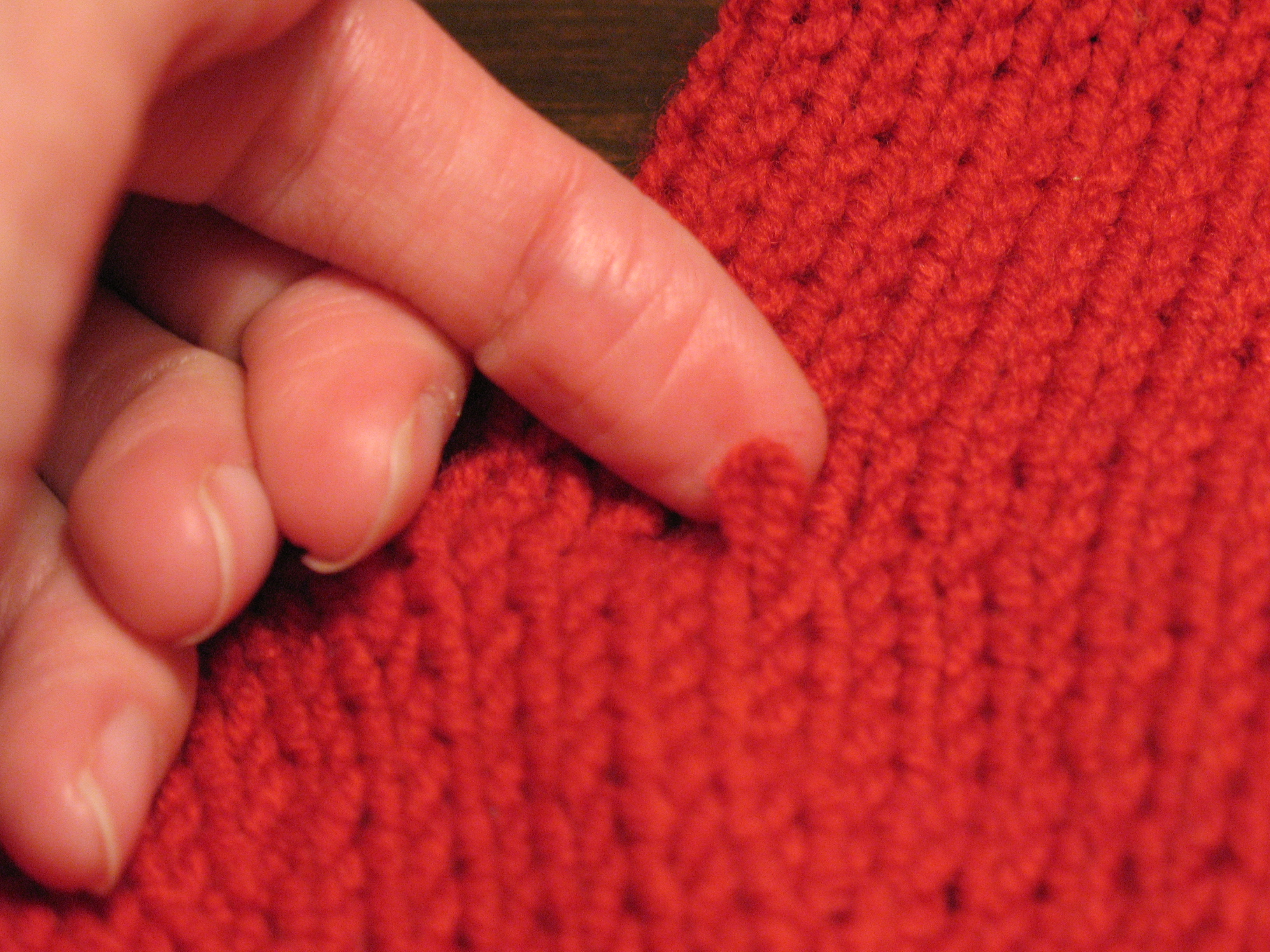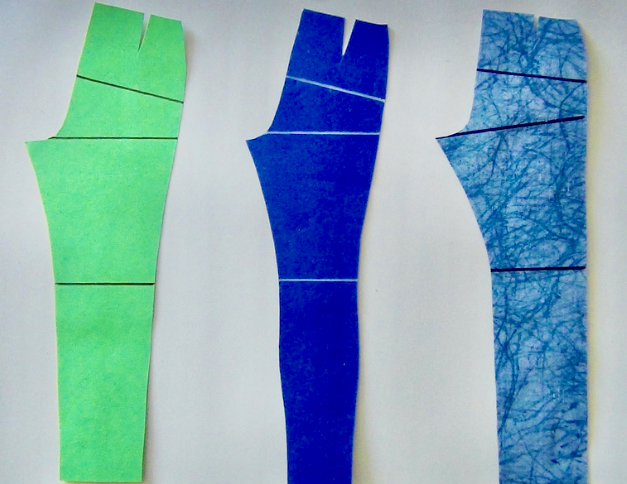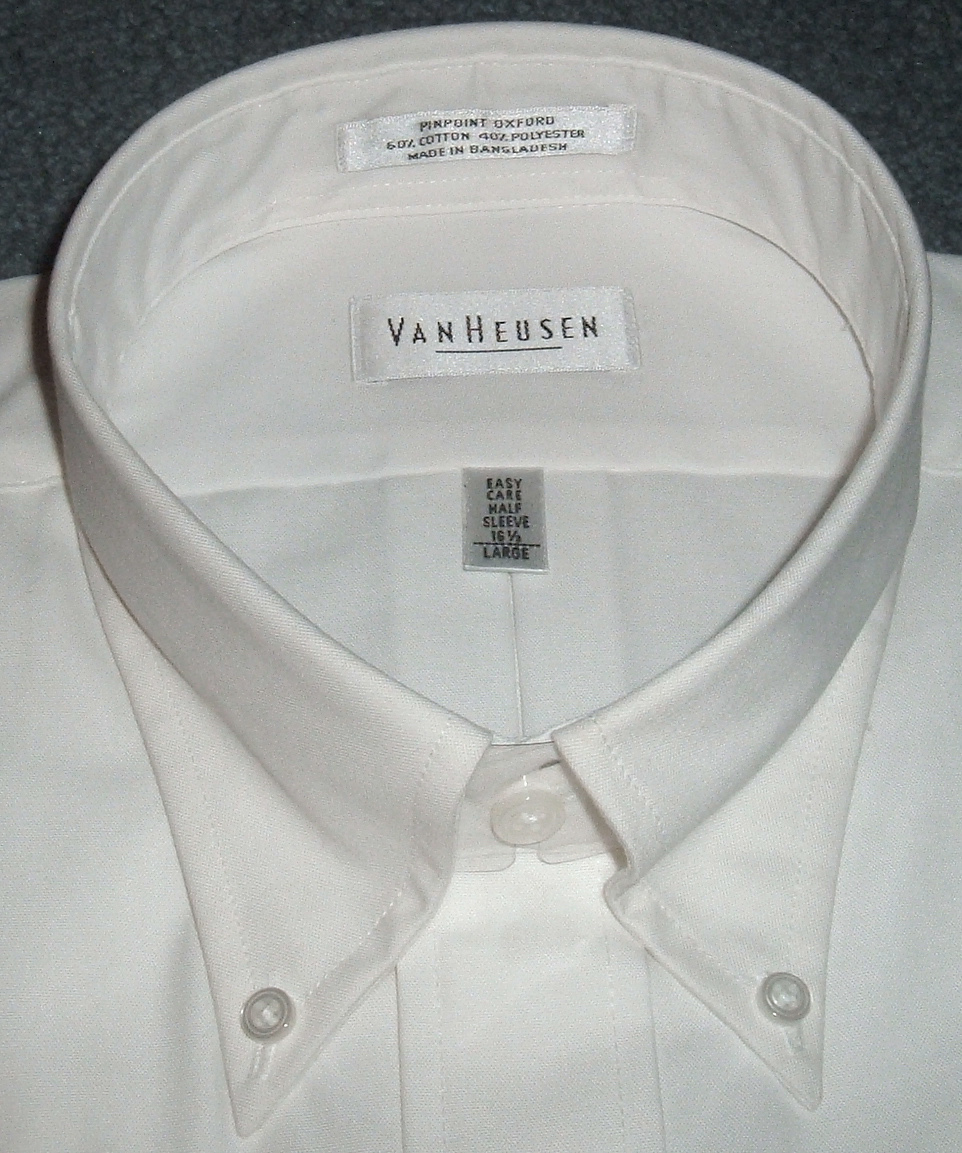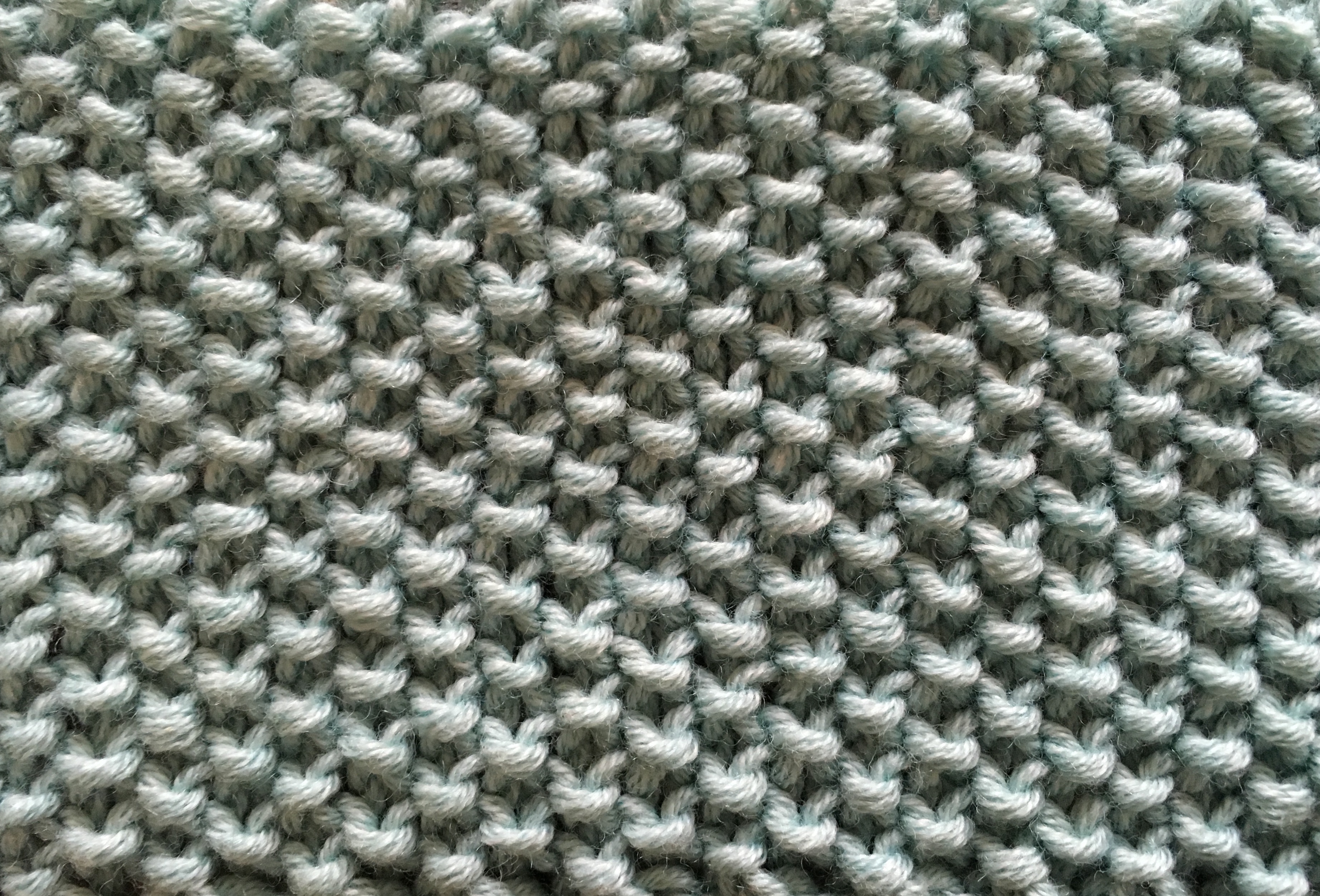|
Gauge (knitting)
The term "gauge" is used in knitting to describe the fineness size of knitting machines. It is used in both hand knitting and machine knitting. The phrase in both instances refers to the number of stitches per inch rather than the size of the finished article of clothing. The gauge is calculated by counting the stitches (for hand knitting) or needles (on a knitting machine bed) across a number of inches, then dividing by the sample's width in inches. Gauge on knitting machines There are two types of classification of Knitting Gauges or Unit of Measure: *A – Used for Cotton Fully fashion flat machines (Bentley – Monk, Textima, Sheller, etc.) where "Gauge" is measured in 1.5 inches (2.54 cm). The machine's gauge is expressed by the number of needles needed to achieve that gauge. *B – Used for hand, mechanical, or modern Electronic Flat Machines (Stoll, Shima, Protti, etc.), where gauge is measured in 1-inch (2.5 cm) increments. The machine's gauge is again measured ... [...More Info...] [...Related Items...] OR: [Wikipedia] [Google] [Baidu] |
Knitting
Knitting is a method for production of textile Knitted fabric, fabrics by interlacing yarn loops with loops of the same or other yarns. It is used to create many types of garments. Knitting may be done Hand knitting, by hand or Knitting machine, by machine. Knitting creates Stitch (textile arts), stitches: loops of yarn in a row; they can be either on straight flat needles or in ''the round'' on needles with (often times plastic) tubes connected to both ends of the Knitting needle, needles. There are usually many ''active stitches'' on the knitting needle at one time. Knitted fabric consists of a number of consecutive rows of connected loops that intermesh with the next and previous rows. As each row is formed, each newly created loop is pulled through one or more loops from the prior row and placed on the ''gaining needle so'' that the loops from the prior row can be pulled off the other needle without unraveling. Differences in yarn (varying in fibre type, Yarn weight, ''w ... [...More Info...] [...Related Items...] OR: [Wikipedia] [Google] [Baidu] |
Clothing
Clothing (also known as clothes, garments, dress, apparel, or attire) is any item worn on a human human body, body. Typically, clothing is made of fabrics or textiles, but over time it has included garments made from animal skin and other thin sheets of materials and natural products found in the environment, put together. The wearing of clothing is mostly restricted to human beings and is a feature of all human societies. The amount and type of clothing worn depends on gender, body type, social factors, and geographic considerations. Garments cover the body, footwear covers the feet, gloves cover the hands, while hats and headgear cover the head, and underwear covers the intimate parts. Clothing serves many purposes: it can serve as protection from the elements, rough surfaces, sharp stones, rash-causing plants, and insect bites, by providing a barrier between the skin and the environment. Clothing can insulate against cold or hot conditions, and it can provide a hygienic barrie ... [...More Info...] [...Related Items...] OR: [Wikipedia] [Google] [Baidu] |
External Links
An internal link is a type of hyperlink on a web page to another page or resource, such as an image or document, on the same website or domain. It is the opposite of an external link, a link that directs a user to content that is outside its domain. Hyperlinks are considered either "external" or "internal" depending on their target or destination. Generally, a link to a page outside the same domain or website is considered external, whereas one that points at another section of the same web page or to another page of the same website or domain is considered internal. Both internal and external links allow users of the website to navigate to another web page or resource. These definitions become clouded, however, when the same organization operates multiple domains functioning as a single web experience, e.g. when a secure commerce website is used for purchasing things displayed on a non-secure website. In these cases, links that are "external" by the above definition can conce ... [...More Info...] [...Related Items...] OR: [Wikipedia] [Google] [Baidu] |
Pattern (sewing)
In sewing and fashion design, a pattern is the stencil, template from which the parts of a garment are traced onto woven fabric, woven or knitted fabrics before being cut out and assembled. Patterns are usually made of paper, and are sometimes made of sturdier materials like paperboard or cardboard if they need to be more robust to withstand repeated use. The process of making or cutting patterns is sometimes compounded to the one-word patternmaking, but it can also be written pattern making or pattern cutting. A sloper pattern, also called a ''block pattern'', is a custom-fitted, basic pattern from which patterns for many different styles can be developed. The process of changing the Clothing sizes, size of a finished pattern is called pattern grading. Several companies, like Butterick Publishing Company, Butterick and Simplicity Pattern, Simplicity, specialize in selling pre-graded patterns directly to consumers who will sew the patterns at home. These patterns are usually p ... [...More Info...] [...Related Items...] OR: [Wikipedia] [Google] [Baidu] |
Sweater Design
Sweater design is a specialization of fashion design in which knitted sweaters are designed to fulfill certain aesthetic, functional and commercial criteria. The designer typically considers factors such as the insulating power of the sweater (and its resulting warmth for the wearer); the fashion of its colors, patterns, silhouette and style lines, particularly the neckline and waistline; the convenience and practicality of its cut; and in commercial design, the cost of its production and the profitability of its price point. Sweater designs are often published in books and knitting magazines. Sweater design is an old art, but continues to attract new designers, such as Nicky Epstein and Meg Swansen. Criteria The aim of sweater design is a sweater that fulfils certain criteria. The primary criterion is that its intended wearer wants to wear it and, in case of commercial sweater design, is willing to buy it at a commercially feasible price point. General secondary criteria ... [...More Info...] [...Related Items...] OR: [Wikipedia] [Google] [Baidu] |
Hemline
The hemline is the line formed by the lower edge of a garment, such as a skirt, dress or coat, measured from the floor. The hemline is perhaps the most variable style line in fashion, changing shape and ranging in height from hip-high to floor-length. What is a fashionable style and height of hemline has varied considerably throughout the years, and has also depended on a number of factors such as the age of the wearer, the occasion for which the garment is worn and the choice of the individual. Types Similar to necklines and waistlines, hemlines can be grouped by their height and shape: * floor-length hemlines * ankle hemlines * midcalf hemlines * below-knee hemlines * above-knee hemlines * mid-thigh hemlines * hip-high hemlines * handkerchief hemlines * diagonal or asymmetric hemlines * high-low hemlines, usually short in front and dipping behind * other hemlines, such as modern-cut hemlines Dresses and skirts are also classified in terms of their length: * mini * ba ... [...More Info...] [...Related Items...] OR: [Wikipedia] [Google] [Baidu] |
Cuff
A cuff is a layer of fabric at the lower edge of the sleeve of a garment (shirt, coat, jacket, etc.) at the wrist, or at the ankle end of a trouser leg. The function of turned-back cuffs is to protect the cloth of the garment from fraying, and, when frayed, to allow the cuffs to be readily repaired or replaced, without changing the garment. Cuffs are made by turning back (folding) the material, or a separate band of material can be sewn on, or worn separately, attached either by buttons or studs. A cuff may display an ornamental border or have lace or some other trimming. In US usage, the word ''trouser cuffs'' refers to the folded, finished bottoms of the legs of a pair of trousers. In the UK, while this usage is now sometimes followed, the traditional term for the turned up trouser hem is 'turnup'. History Between the 15th and 18th centuries, rich men often wore sleeve cuffs ornamented with fine lace. Catholic clergy have the cuffs of their choir dress ornamented with fine ... [...More Info...] [...Related Items...] OR: [Wikipedia] [Google] [Baidu] |
Collar (clothing)
In clothing, a collar is the part of a shirt, dress, coat or blouse that fastens around or frames the neck. Among clothing construction professionals, a collar is differentiated from other necklines such as revers and lapels, by being made from a separate piece of fabric, rather than a folded or cut part of the same piece of fabric used for the main body of the garment. A collar may be permanently attached to the main body of the garment (e.g. by stitching) or detachable. Word usage The Oxford English Dictionary traces ''collar'' in its modern meaning to c. 1300, when collars served as neck-protecting armour. History Today's shirt collars descend from the rectangular band of linen around the neck of 16th century shirts. Separate ruffs exist alongside attached ruffled collars from the mid-16th century, usually to allow starching and other fine finishing, or to make collar-laundering easier.Compare: During the medieval period and sporadically thereafter, people wore ... [...More Info...] [...Related Items...] OR: [Wikipedia] [Google] [Baidu] |
Yarn Weight
Yarn weight refers to the thickness of yarn used by knitters, weavers, crocheters and other fiber artists. Importance Changing yarn weight or needle size can have a significant impact on the finished project, so standardized systems have been spread about, as well as conversion systems for regional standards (especially needle sizes). Yarn weight is important in achieving the correct gauge or tension for a particular project and can help with yarn substitution. The Craft Yarn Council of America has developed a system that seeks to standardize the labeled weights of yarn.The CYC weight system can be found at http://www.craftyarncouncil.com/weight.html Most yarns state their weight on the ball band but some may not, only giving the composition. Some brands use a standardized numbering system that uses seven ranges of relative thickness of yarn Yarn is a long continuous length of interlocked fibres, used in sewing, crocheting, knitting, weaving, embroidery, ropemakin ... [...More Info...] [...Related Items...] OR: [Wikipedia] [Google] [Baidu] |
Hand Knitting
Hand knitting is a form of knitting, in which the knitted fabric is produced by hand using needles. Types Flat knitting Flat knitting uses two straight needles to make generally two-dimensional (flat) pieces. Flat knitting is usually used to knit flat pieces like scarves, blankets, afghans, and the backs, fronts and arms of sweaters (pullovers). In flat knitting, generally stockinette stitch, the hand-knitter knits from right-to-left on one side of the fabric, turns the work (over), and then purls right-to-left back to the starting position. Usually, the smooth side of the fabric is considered the ''right side'', the one facing outwards for viewing; and the side that faces inwards, towards the body, the ridged side, is known as the ''wrong side''. Thus, flat knitting involves knitting each row on the right side, then purling each row on the wrong side, etc. If each row is knit (no purls) this creates garter stitch, which has the same appearance on both sides and crea ... [...More Info...] [...Related Items...] OR: [Wikipedia] [Google] [Baidu] |
Basic Knitted Fabrics
Basic knitted fabrics include stocking stitch, reverse stocking stitch, garter stitch, seed stitch, faggoting, and tricot. In some cases, these fabrics appear differently on the right side (knitting), right side (as seen when making the stitch) than on the wrong side (knitting), wrong side (as seen from the other side, when the work is turned). Stockinette/stocking stitch and reverse stockinette stitch Stocking stitch (in US, stockinette stitch) is the most basic knitted fabric; every stitch (as seen from the right side (knitting), right side) is a knit stitch. This fabric has also been referred to as Knit or Knitted, Front, Smooth, Jersey, Plain, Vertical and Plain Sweater Fabric. In the circular knitting, round, stocking stitch is produced by knitting every stitch; by contrast, in the flat, stocking stitch is produced by knitting and purling alternate rows. Variations on this fabric can be made by twisting stitches (knitting or purling through the back of each loop on the needl ... [...More Info...] [...Related Items...] OR: [Wikipedia] [Google] [Baidu] |
Cable Knitting
Cable knitting is a style of knitting in which textures of crossing layers are achieved by permuting stitches. For example, given four stitches appearing on the needle in the order ', one might cross the first two (in front of or behind) the next two, so that in subsequent rows those stitches appear in the new order '. Methods The stitches crossing behind are transferred to a small ''cable needle'' for storage while the stitches passing in front (or behind) are knitted. The former stitches are then transferred back to the original needle or knitted from the cable needle itself. Instead of a cable needle, some knitters prefer to use a large safety pin or, for a single stitch, simply hold it in their fingers while knitting the other stitch(es). Cabling is typically done only when working on the right side of the fabric, i.e., every other row. This creates a ''spacer row'', which helps the fabric to relax. Cable knitting usually produces a fabric that is less flexible and more de ... [...More Info...] [...Related Items...] OR: [Wikipedia] [Google] [Baidu] |






